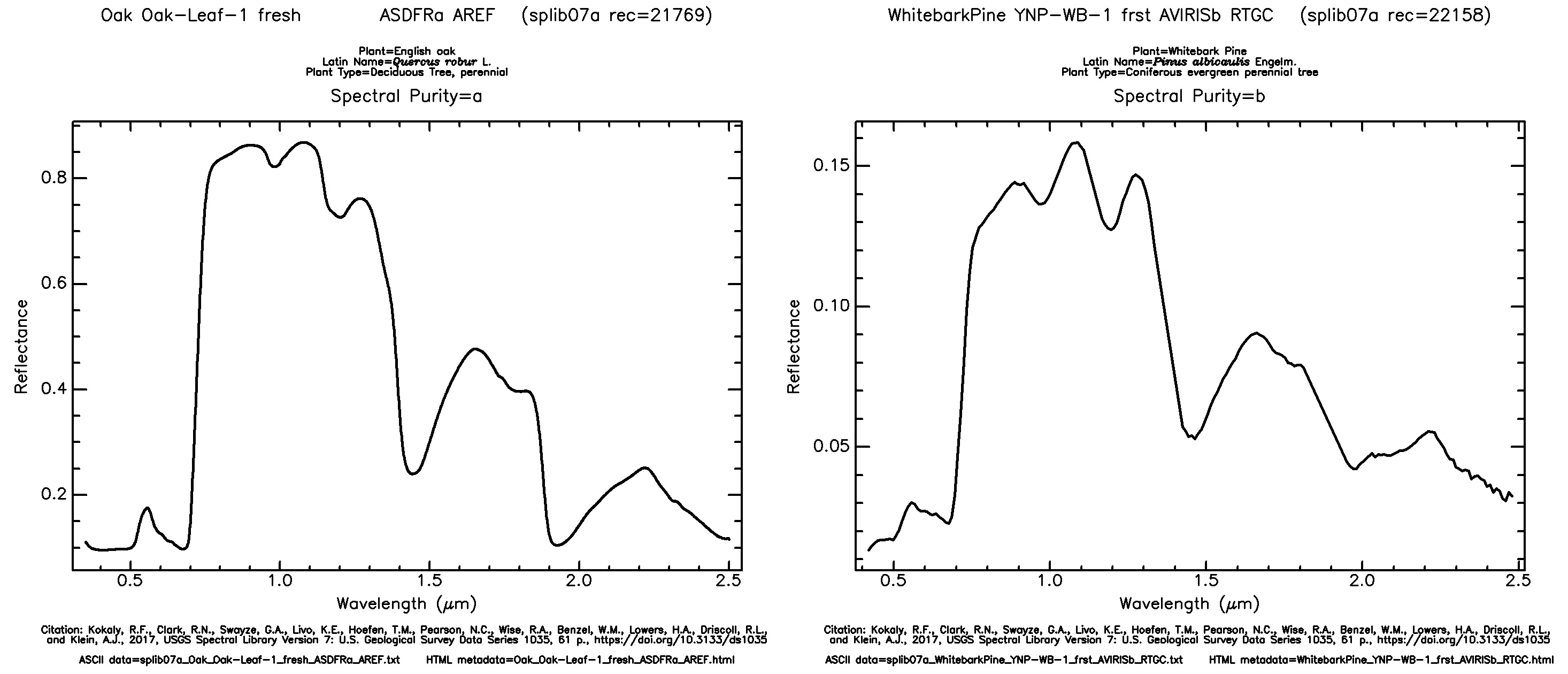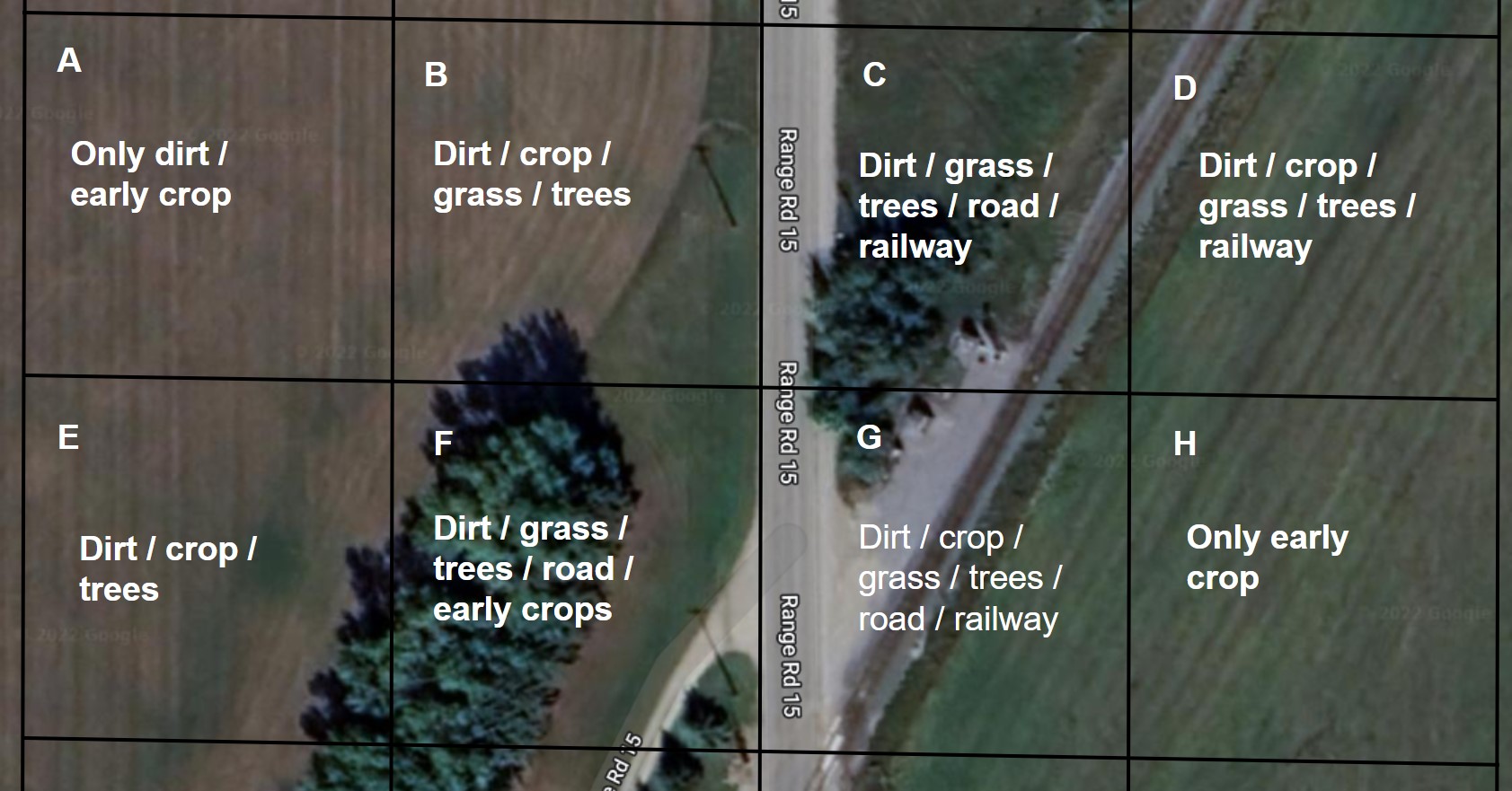Hyperspectral Signatures
Hyperspectral imaging uses a narrow range of wavelengths across the electromagnetic spectrum, to produce images of the Earth's surface. These images contain information about the reflectance of each pixel across the electromagnetic spectrum. How each pixel reflects light can tell us a lot about the materials that are present within a pixel.
Background
We can analyze hyperspectral images through the use of material signatures, also known as spectral signatures or spectral libraries. A material signature is a plot of the reflectance of a particular material as a function of wavelength. These material signatures are typically produced by isolating a specific material, and imaging it under lab conditions. By comparing the reflectance of a pixel in a hyperspectral image to known material signatures, it is possible to identify the materials present within an image.

Example of material signatures from the USGS Spectral Library 7
Mixed Pixels
It is not always possible to accurately identify a material based on the reflectance of a single pixel in a hyperspectral image. This is because a single pixel may contain more than one material, a phenomenon known as a mixed pixel. In these cases, it is necessary to use techniques such as endmember extraction to identify the individual materials present in the mixed pixel.

Example of low spatial resolution pixels (black boxes) that contain mixed pixels and unmixed pixels
Lower spatial resolutions will result in more mixed pixels as a single pixel covers more of the earth's surface. When spatial resolution is increased, it is more likely that each pixel will contain a single material.
Endmember extraction (also known as spectral unmixing) involves identifying a set of pure spectral signatures, known as endmembers, that can be used to represent the materials present in the image. These endmembers are then used to model the mixed pixels in the image, allowing the individual materials within a mixed pixel to be identified and mapped.
PySptools provides endmembers extraction algorithms (EEA) and documentation on how to apply the algorithms.
Classifying Pixels
We can also classify pixels based on known spectral signatures. There are a number of different supervised classification algorithms available, which analyze the similarity of a pixel's reflectance spectra to a known library of material spectral signatures Since most material spectra are collected under laboratory conditions, actual material spectra within hyperspectral imagery may not match exactly. Most classification algorithms for hyperspectral imagery will look at the similarity of an pixel's spectra to known materials, instead of trying to match materials exactly. PySptools also provides a number of classification algorithms that can be used.